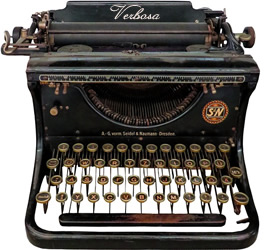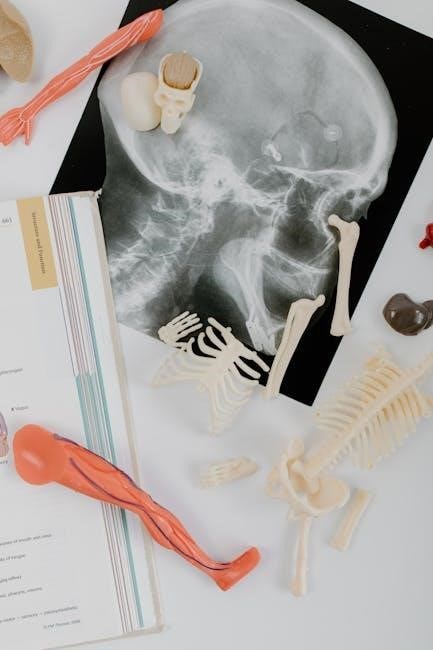The human anatomy and physiology lab manual main version provides
a comprehensive guide to understanding human body systems and functions․
Overview of the Main Version

The human anatomy and physiology lab manual main version is a comprehensive resource that provides students with a thorough understanding of the human body and its functions․
The main version of the lab manual includes a wide range of exercises and activities designed to help students visualize and understand complex anatomical structures and physiological processes․
The manual is organized into units that cover different body systems‚ including the skeletal‚ muscular‚ and nervous systems․
Each unit includes a variety of exercises and activities‚ such as dissections‚ anatomy identification‚ and laboratory procedures‚ that are designed to help students develop a deep understanding of human anatomy and physiology․
The main version of the lab manual is designed to be used in conjunction with other resources‚ such as textbooks and online materials‚ to provide students with a comprehensive learning experience․
The manual is written in a clear and concise manner‚ making it easy for students to follow and understand the material․
Overall‚ the human anatomy and physiology lab manual main version is an essential resource for students studying human anatomy and physiology․
The manual provides a thorough and comprehensive introduction to the subject‚ and is an invaluable tool for students looking to develop a deep understanding of the human body and its functions․
Importance of Laboratory Practice in Understanding Anatomical Structure and Function
Laboratory practice is essential for understanding anatomical structure and function‚ as it provides students with hands-on experience and direct observation of the human body․
The human anatomy and physiology lab manual main version emphasizes the importance of laboratory practice in developing a deep understanding of the subject․
Through laboratory exercises and activities‚ students can visualize and understand complex anatomical structures and physiological processes‚ which is critical for developing a thorough understanding of human anatomy and physiology․
Laboratory practice also helps students develop critical thinking and problem-solving skills‚ as they learn to analyze and interpret data and make informed decisions․
Furthermore‚ laboratory practice provides students with the opportunity to apply theoretical knowledge in a practical setting‚ which helps to reinforce learning and improve retention․
The combination of theoretical knowledge and practical application is essential for developing a comprehensive understanding of human anatomy and physiology․
By emphasizing laboratory practice‚ the human anatomy and physiology lab manual main version provides students with a unique and effective learning experience․

Components of the Lab Manual
The lab manual includes print and digital components for anatomy study;
Print Manual and eLabs
The human anatomy and physiology lab manual main version features a print manual and eLabs‚ providing a comprehensive learning experience for students․ The print manual contains detailed instructions and illustrations‚ while the eLabs offer interactive simulations and virtual lab experiences․ This combination of traditional and digital resources allows students to engage with the material in a variety of ways‚ reinforcing their understanding of complex anatomical and physiological concepts․ The print manual and eLabs work together to create a rich and immersive learning environment‚ helping students to develop a deeper appreciation for the human body and its many systems․ By incorporating both print and digital components‚ the lab manual provides a flexible and effective learning solution for students of human anatomy and physiology‚ supporting their academic success and preparation for future careers in the field․ The manual is designed to be user-friendly and accessible․
Exercises and Laboratory Procedures
The human anatomy and physiology lab manual main version includes a range of exercises and laboratory procedures designed to help students develop a practical understanding of anatomical and physiological concepts․ These exercises are carefully structured to guide students through the process of exploration and discovery‚ using a combination of observation‚ measurement‚ and experimentation to learn about the human body․ The laboratory procedures are detailed and easy to follow‚ providing students with a clear understanding of what is expected of them and how to achieve the desired outcomes․ The exercises and laboratory procedures are designed to be completed in a classroom or laboratory setting‚ with students working individually or in groups to complete the assigned tasks․ By completing these exercises and procedures‚ students can gain hands-on experience and develop a deeper understanding of the human body and its many systems‚ preparing them for future careers in healthcare and related fields․ The manual provides a clear and concise guide to these exercises․

Key Features of the Laboratory Manual
Interactive 3-D environment and step-by-step guides enhance learning experiences effectively always online․
Step-by-Step Guide to Dissection and Anatomy Identification
The human anatomy and physiology lab manual main version includes a step-by-step guide to dissection and anatomy identification‚ which helps students to understand the complexities of the human body․
This guide provides detailed instructions and illustrations to facilitate the learning process‚ making it easier for students to identify and understand different anatomical structures․
The step-by-step approach allows students to work at their own pace‚ reviewing and practicing the material as needed‚ and the guide is designed to be used in conjunction with other learning materials․
The main version of the lab manual also includes online resources‚ such as interactive 3-D models and virtual dissections‚ which can be used to supplement the step-by-step guide and provide additional learning opportunities․
Overall‚ the step-by-step guide to dissection and anatomy identification is an essential component of the human anatomy and physiology lab manual main version‚ providing students with a comprehensive and engaging learning experience․
The guide is well-organized and easy to follow‚ making it an invaluable resource for students studying human anatomy and physiology․
Simulated Lab Experiences in an Interactive 3-D Environment
The human anatomy and physiology lab manual main version offers simulated lab experiences in an interactive 3-D environment‚ allowing students to engage with complex anatomical structures in a highly immersive and interactive way․
This online resource provides eight eLab modules that simulate real-world lab experiences‚ enabling students to explore and learn about the human body in a safe and controlled environment․
The 3-D models and virtual dissections allow students to visualize and interact with anatomical structures from different angles and perspectives‚ enhancing their understanding of the subject matter․
The simulated lab experiences are designed to be flexible and adaptable‚ allowing students to work at their own pace and review material as needed․
The interactive 3-D environment also includes quizzes‚ games‚ and other interactive elements to make learning fun and engaging․
The simulated lab experiences are an invaluable resource for students‚ providing a unique and innovative way to learn about human anatomy and physiology․
The online resource is easy to use and navigate‚ making it an essential component of the human anatomy and physiology lab manual main version․

Authors and Contributors
Noted educators Kevin Patton and Frank Bell contribute to the manual with expertise and knowledge in human anatomy and physiology fields and research daily․
Noted Educators Kevin Patton and Frank Bell
Kevin Patton and Frank Bell are renowned educators in the field of human anatomy and physiology‚ with extensive experience in teaching and research․ They have contributed significantly to the development of the lab manual‚ bringing their expertise and knowledge to the forefront․ Their work has been widely recognized and respected‚ and they continue to be involved in the field‚ providing guidance and support to students and educators alike․ The lab manual reflects their commitment to providing high-quality educational resources‚ and their contributions have been instrumental in shaping the content and approach of the manual․ With their expertise‚ the manual provides a comprehensive and accurate guide to human anatomy and physiology‚ making it an essential resource for students and educators․ Their involvement in the project has ensured that the manual meets the highest standards of educational excellence․
Contributions of Dr․ Malgosia Wilk-Blaszczak and Elaine Marieb
Dr․ Malgosia Wilk-Blaszczak and Elaine Marieb have made significant contributions to the human anatomy and physiology lab manual main version․ Dr․ Wilk-Blaszczak has taught human anatomy and human physiology courses‚ bringing her expertise to the development of the lab manual․ Elaine Marieb has also been involved in the creation of educational resources‚ including lab manuals and textbooks․ Their contributions have enhanced the quality and accuracy of the lab manual‚ providing students with a comprehensive guide to human anatomy and physiology․ The lab manual includes exercises and activities designed to help students visualize anatomical structures and understand complex physiological topics․ The contributions of Dr․ Wilk-Blaszczak and Elaine Marieb have been instrumental in shaping the content and approach of the lab manual‚ making it an essential resource for students and educators․ Their work has been widely recognized and respected‚ and they continue to be involved in the field of human anatomy and physiology education․

